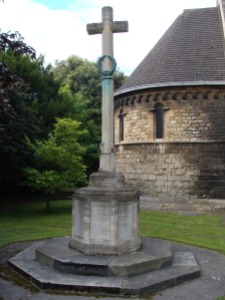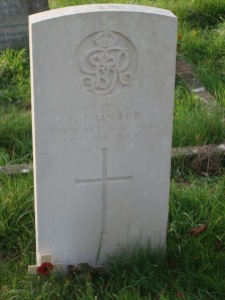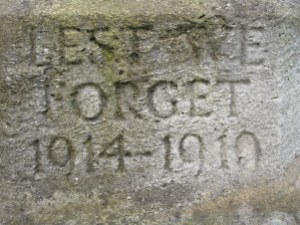Remembrance of Casualties of the Great War
9th November 2014
Rob Taylor, a recent Masters Graduate here at Gloucestershire, maintains his own blog, but has given us permission to reproduce this post about war memorials in the county for Rembererance Sunday.
With the centenary of the Great War upon us, interest has grown exponentially in gaining a better understanding of the events of that war, and the local participants who were claimed in it. One of the best sources of information for discovering the identities of local people who were involved is the plethora of war memorials dotted across the landscape. From church, school and business Rolls of Honour and churchyard crosses, to more elaborate publicly placed monumental forms, these memorials record details of catastrophic community loss. They are also a demonstration of community pride. What I have discovered through an ongoing and now international study, is that many war memorials offer very detailed information about the names listed, ‘a conspicuous time capsule’ of information. From name, rank and serial number, other memorials note decorations won, the place and/or date of death, some noting cause of death. Other memorials list women’s names, (a debated practice at first), some record those who returned. In very few communities known as ‘Thankful Villages’ the commemoration on the Rolls of Service list all in those communities who participated and returned without a single loss. It is these last two group of memorials, noting those who returned, that make the direct connection for any community to the past.
One of the problems with memorials over time however, becomes upkeep and maintenance. At Remembrance Sunday and Remembrance Day (November 11th) citizens gather at these monuments to commemorate and give thanks to those who laid down their lives for the future generations. They want to be able to inspect and in many cases connect themselves to the past, but in some cases the memorials have become unreadable. Additionally some iconographic symbols, thought important and recognizable at the time of construction, have become corroded and are now unidentifiable due to weathering of stone. Worse still, is the problems of vandalism or theft.
A publication by Joseph Devereux and Graham Sacker ‘Leaving All that Was Dear, Cheltenham and The Great War’, is an in depth study of the casualties recorded on the Cheltenham Roll of Honour on the main Promenade Great War Memorial. What their book does is cross reference the Roll of Honour names to other smaller local memorials where those names are also commemorated. I used their research in combination with research discovered when undertaking my University of Gloucestershire Masters of Research dissertation, by locating smaller local memorials in need of restoration.
The work of Devereux and Sacker offered me insight into the lives of those recorded on the St. Peter’s Church war memorial on the Tewkesbury Road. I discovered one name that was not noted in Devereax and Sacker’s book, that being the very faded inscription of: ‘PAINTER G.’ (see photo below). Through exhaustive research and contact directly with Graham Sacker and others, I was able to uncover that the casualty’s name was actually George Painter and he is in fact buried at St Mary’s Church in Fairford Gloucestershire buried with a Commonwealth War Graves Commission headstone (see below). He was from Fairford but had lived on Waterloo Road Cheltenham, across from St Peters church. He is listed on the St Peter’s memorial as the Fairford memorial had already been completed before George Painter’s death in February 1920.
A rather special wreath laying ceremony on Remembrance Day (Tuesday November 11th). It will take place on the Tewkesbury Road at St Peter’s Church at 10:45 AM. Interest is growing in the fact that this will be the first service to be held at the church memorial in many years. Although conservation work has not yet begun it is being more seriously considered. A large public presence will emphasise the need for conservation work at this memorial and allow people to see the actual degree of conservation needed.
It is hoped that with the availability of government funds advertised to clean, conserve and repair (in worst cases), memorials, that borough councils can develop better working relationships with organizations such as the War Memorial Trust, amongst others to develop a more cohesive working relationship to better monitor the condition of all local memorials and that by doing this the memorials should be able to be better maintained.
I have continued to work to assist the Gloucestershire representative of the War Memorial Trust in identifying Great War Memorials that are in need of cleaning and conservation. From my personal investigation of over 500 of the 607 memorials recorded by the United Kingdom National Inventory of War Memorials (UKNIWM), in the County of Gloucestershire I feel that my developed expertise is an asset. In fact I have located one memorial within the county which is not listed on the UKNIWM listing which suggests that there may be more. This 608th memorial may be the basis for a publication!


